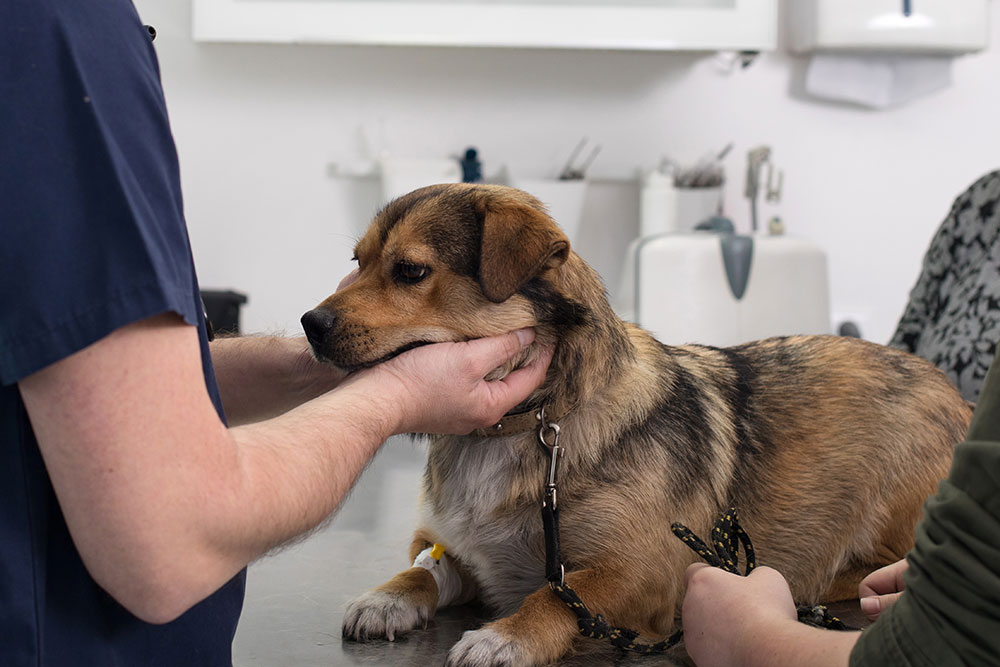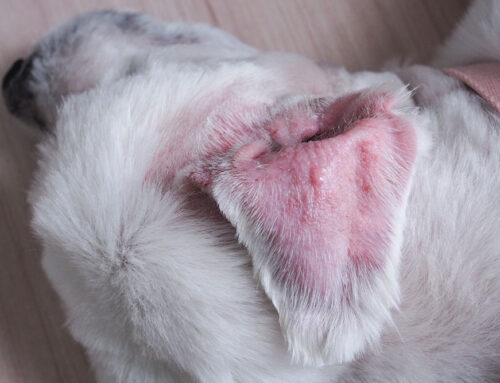Watching your pet experience a seizure can be one of the most frightening moments for a pet owner. Seizures often happen without warning and can leave you feeling helpless. Whether caused by epilepsy, toxin exposure, trauma, or a metabolic condition, knowing how to respond during a seizure—and what to do afterward—is critical for your pet’s safety and long-term well-being.
At Valley Center Veterinary Clinic, we’re here to help you navigate this experience with confidence and care. This guide covers how to recognize different types of seizures, respond effectively during an episode, and understand the treatment and long-term management options available.
If your pet has experienced a seizure, please seek veterinary care right away.
What Is a Seizure, and Why Do They Happen?
Seizures are the result of abnormal electrical activity in the brain. They can cause a wide range of symptoms, from full-body convulsions to more subtle behavioral changes or twitching. Recognizing the type of seizure can help guide diagnosis and treatment.
Types of Seizures in Pets
- Generalized (Grand Mal): Full-body convulsions, loss of consciousness, often lasts 1–3 minutes
- Focal (Partial): Twitching, drooling, or unusual movements limited to one part of the body
- Cluster Seizures: Two or more seizures within 24 hours
- Status Epilepticus: A seizure lasting more than 5 minutes or multiple seizures with no recovery between—this is a life-threatening emergency
Learn more about seizure types in dogs – Cornell Vet
Common Causes of Seizures
Identifying the cause is essential to managing your pet’s condition. Common culprits include:
1. Idiopathic Epilepsy
Often diagnosed between 6 months and 5 years, idiopathic epilepsy is the most common cause in dogs, especially breeds like Labradors, Beagles, and Border Collies.
Learn more about canine epilepsy – AKCCHF
2. Toxins & Poisons
Many household items can trigger seizures, including:
- Chocolate, xylitol, and caffeine
- Rodent poison, antifreeze
- Certain human medications (e.g., ibuprofen, antidepressants)
- Sago palms and other toxic plants
3. Brain zumors or Head Trauma
Seizures in older pets can signal brain tumors. Trauma from accidents can also lead to lasting neurological damage.
Neurology & brain tumors – NC State Vet Hospital
4. Metabolic Disorders
Conditions such as:
- Liver disease (hepatic encephalopathy)
- Kidney failure
- Low blood sugar (hypoglycemia, especially in toy breeds or diabetic pets)
can all cause seizure activity.
What to Do During a Seizure
Immediate Actions
- Stay calm – Most seizures are brief and not immediately life-threatening
- Clear the area – Move furniture or objects that could cause injury
- Do not touch their mouth – Contrary to myths, pets will not swallow their tongue
- Time the episode – If it lasts longer than 5 minutes, seek emergency care
- Protect but don’t restrain – Gently cushion their head if possible
What NOT to Do
- Don’t try to hold your pet down
- Don’t attempt to give food, water, or medication
- Don’t panic—your calm presence is essential
Learn More: Recognize a pet emergency – AAHA
After the Seizure: The Post-Ictal Stage
After a seizure, your pet may appear confused, disoriented, or temporarily blind. This recovery period can last minutes to hours.
What to do:
- Keep them in a quiet, safe area
- Offer water if they’re alert, but wait before feeding
- Provide comfort without overstimulation
Keeping a Seizure Log
Maintaining a record helps your veterinarian understand patterns and triggers. After each episode, note:
- Date and time
- Duration of the seizure
- Description of symptoms
- Behavior before and after
- Any potential triggers (e.g., stress, diet, medications)
Schedule an evaluation with our team if your pet has experienced a seizure.
When to Seek Veterinary Care
Call or visit us immediately if:
- A seizure lasts longer than 5 minutes
- Your pet has multiple seizures in a day
- Symptoms include vomiting, collapse, or toxin exposure
- Disorientation or weakness lasts longer than 30 minutes
Seizures can worsen over time without treatment—early intervention makes a difference.
Diagnosing and Managing Seizures
Diagnostic Testing
Our team may recommend:
- Bloodwork and urinalysis – To evaluate organ function and glucose levels
- Neurological exam – Assess brain function and reflexes
- Advanced imaging – MRI or CT scan to detect tumors or abnormalities
- Spinal tap – If infection or inflammation is suspected
Long-Term Treatment
Seizure management is tailored to your pet’s needs and may include:
- Anti-seizure medications – Phenobarbital, Keppra, or Potassium Bromide
- Prescription diets – Or omega-3 supplements to support brain health
- Rehabilitation – Especially if neurological damage has occurred
Learn more about rehab for neurological conditions
Preventing Future Episodes
While not all seizures can be prevented, you can help reduce the risk:
- Keep toxic foods and medications out of reach
- Minimize household stress and overstimulation
- Maintain consistent meals and routines to avoid hypoglycemia
- Stick to medication schedules and monitor closely for side effects
- Schedule regular checkups and bloodwork to monitor medication levels
We’re Here to Help—Every Step of the Way
Seizures are alarming, but with proper care, many pets with seizure disorders can live full, happy lives. At Valley Center Veterinary Clinic, we’re here to support you with expert diagnostics, compassionate care, and personalized treatment plans tailored to your pet’s unique needs.
If your pet has had a seizure—or you’re concerned about their neurological health—don’t wait.








Leave A Comment